- JAPANESE
- LANGUAGE
X
 THAT IS GOOD
THAT IS GOOD
Following the previously published article introducing the film, here’s the story of how it was shot, the secret story, and the story of Kongosanmaiin!
▼Short PV
The Koyasan Shingon sect is a sanctuary for ascetic practices, founded by Kobo-Daishi Kukai.
It was studied by Kukai, who stayed in Tang Dynasty China from 803 to 806 as a long-term student of the Japanese envoy to Tang Dynasty China, and was systematically transmitted to Japan in the form of profound teachings, sutras and mandalas. Later, in 816, Emperor Saga bestowed Kukai with a gift to establish Koyasan as a place to practice ascetic practices.
It is said that Kobo-Daishi Kukai practiced one of the esoteric practices of the Shingon sect of Buddhism called “Nu-jo” at the mausoleum of Kobo-Daishi in Okunoin Temple in Koyasan to gain enlightenment, and that he still practices there today. A meal called “Shoujingu” is still served twice a day, at 6:00 and 10:30 every morning. The second half of the video also captures this scene.
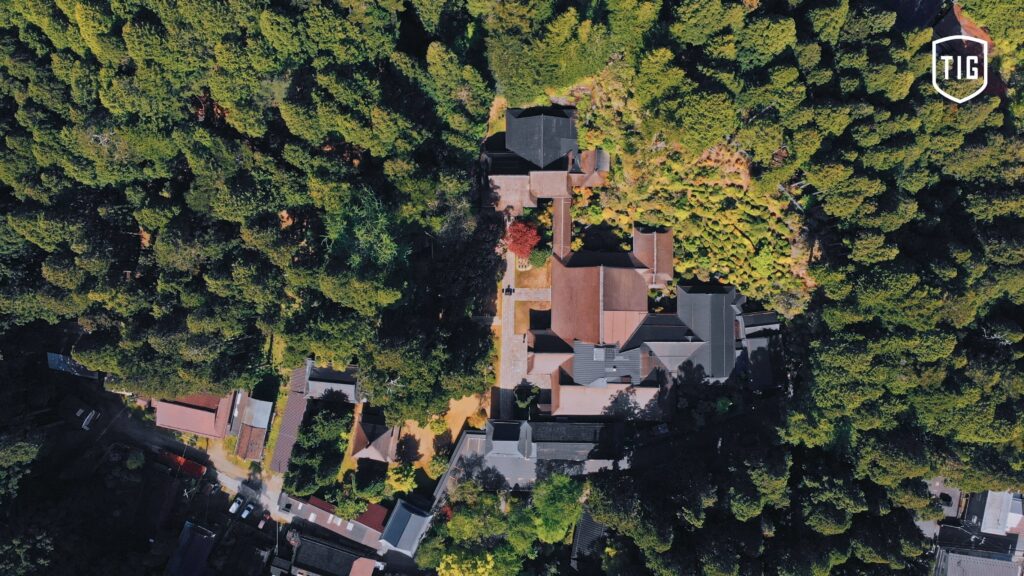
Kongosanmaiin was built in 1211 at the request of Masako Hojo, who is known to have run the shogunate as a nun after her husband’s death, to mourn the death of her husband Minamoto no Yoritomo, the first Japan’s leading military figure, who died in 1199, and her son Sanetomo.
At that time, it is said that the temple played an important role in Koyasan as a connection between the Kamakura Shogunate and Koyasan. According to one theory, at that time, large temples sometimes had armed monks for self-defense, and there is an anecdote that the Kamakura Shogunate used the temple as a watchtower to keep an eye on Koyasan, which had a large population.
When the temple was registered as a UNESCO World Heritage Site in 2004 as “Sacred Sites and Pilgrimage Routes in the Kii Mountain Range,” it played an important role as a fundamental temple in the establishment of the UNESCO World Heritage Site as it has a number of historical cultural assets including the National Treasure,Tahoto, and the important cultural asset, the sutra storehouse.
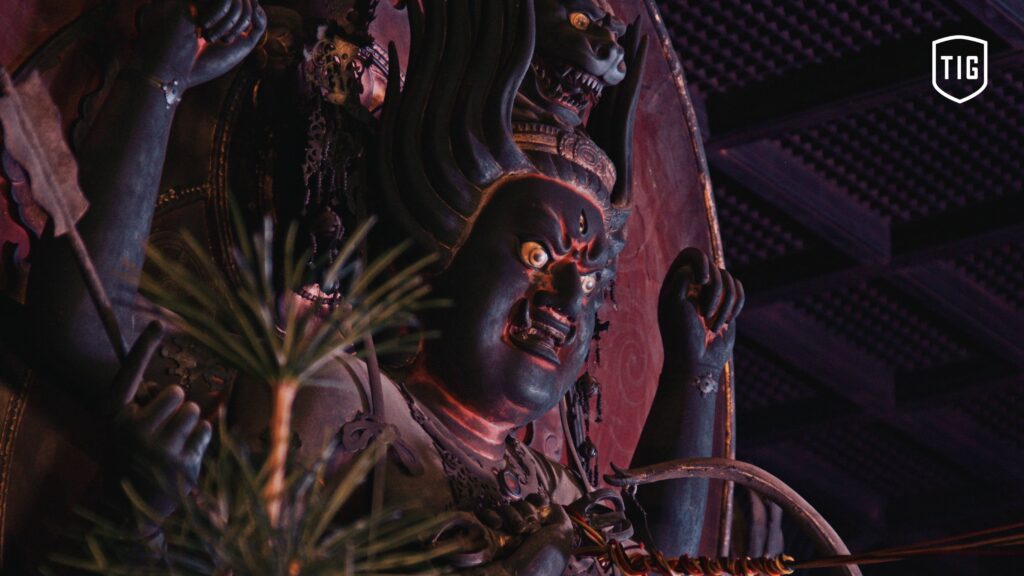
The main deity, Aizen Myoo(Ragaraja), is said to have been modeled on Minamoto no Yoritomo’s own image before he died, and was carved by the Buddhist priest Unkei.
Originally, it meant that if the “greedy mind of human beings” is raised to the state of ” Sanmai,” the state of the Buddhahood of Vajrasattova (the state in which the mind seeking enlightenment is fully concentrated through meditation, etc.), then “Bonnosokubodai,” in other words, worldly desires become relationships that leads to enlightenment.
It is said that it has a red body, three eyes, and a lion’s crown on its head, but the Ragaraja of Kongosanmaiin has a face that looks frightening at first glance, but when you look closely, you can feel compassion and kindness. Moreover, it is said to bring good relationships of all kinds, not just romantic ones…. Needless to say, I worshipped it a lot there lol
The connection between Koyasan and Tsuyoshi started when he was a teacher at the International DJ & Production School (hereafter IDPS) Osaka, which opened in 2016.
IDPS has a DJ named Energy-Dai, who became a priest as a member of the Koyasan Shingon sect under the Buddhist name of “Daikuu Sakata,” and he invited us to join him.
Speaking of Tsuyoshi, he is a trance artist. Trance was born in Germany in the late 1980s and developed in the party scene as “Goa Trance” in Goa, India in the early 1990s.Sound sources that reflected the image of the area at the time and record jacket designs with Hindu gods also appeared. Goa, as you know, was a resort town where backpackers gathered, and this envy of spirituality led to an inclination towards Buddhism and esotericism, as well as cultural involvement with Buddism and Tibet.
In fact, there are many episodes such as a Buddhist monk describing trance as similar to the idea of sutra reading and mandalas by monks, or the Dalai Lama visiting a famous festival abroad… There are many such episodes. (We’ll update later.)
Tsuyoshi also had an interest in Esoteric Buddhism in his mind from the beginning. Tsuyoshi, who at the time wanted to put himself in a place of ascetic practice and reflect on his inner self, accepted Energy-Dai’s invitation and entered Koyasan for ascetic practice. That was around 2017-2018.
With the cooperation and introduction of Energy-Dai, Utsumi chief priest of Kokenji Temple of Mt.Ennichi, Hoken Inaba, the chief priest of Honkakuin Temple (He has also released a CD of Sutra reading from Victor Entertainment Co.,) and Kongobuji Head Temple in Koyasan, we were able to film a DJ performance in the beautiful front garden of Kongosanmaiin, as well as drone shooting at various spots in Koyasan and around buildings of important cultural assets.
Kuri, the chief priest of Kongosanmaiin, has a very good understanding of music, and he made many accommodations and adjustments, which made the filming go very smoothly. Thank you all for your cooperation!
The filming begins the night before. This time, we were allowed to stay at a lodging house the day before, film the sutra reading from early in the morning, and immediately after that, record a live esoteric trance mixed with the sound of the sutra reading. Will we, who are polluted by the world, be able to do it? lol
Kongosanmaiin is located in a very quiet environment, hidden away from Odawara Street, the main street of Koyasan, and it also has a shukubo (pilgrims’ lodging). It’s not often that I have the opportunity to stay in a shukubo, but I was nervous about what it would be like.
However, the room we were shown to was very clean, just like a room in a ryokan, and some of the rooms faced the courtyard, overlooking the elegant garden. We were somewhat calmed down and asked Tsuyoshi about many things.
The content of the conversation will be reflected in the interview, and the discussion will be published on Tsuyoshi’s Youtube channel later. (I’ll post a link when it’s available.)Thanks to these conversations, our understanding of Esoteric Buddhism, music, and the trance scene of the time deepened, and our minds were set for tomorrow’s shooting.
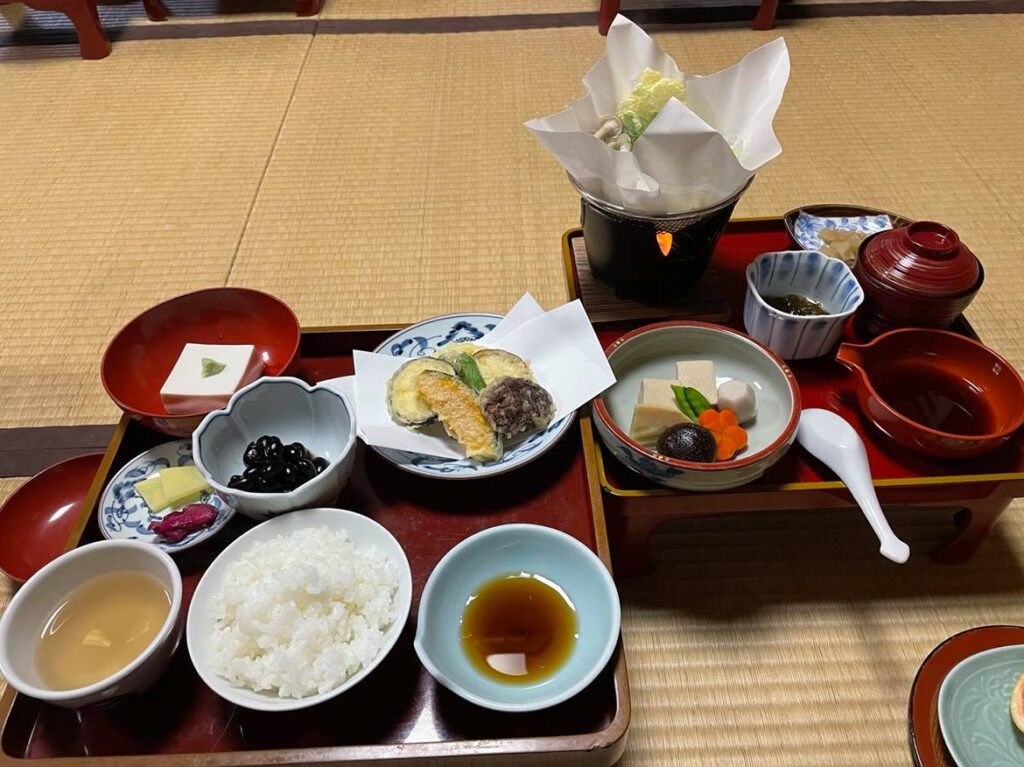
Dinner was a long awaited Shojin Ryori (Buddhist vegetarian meal). Even though it was a vegetarian meal, it had various elaborate touches, and the appearance and taste were very satisfying. We were served this in a large hall with a view of the courtyard. The bath was also pretty, and I felt like I was at a ryokan!
After that, Tsuyoshi went to bed early to prepare for the next day’s shooting. We discussed the set-up plan for the next day’s shooting and the plan for the B-roll shooting after that.
Preparations begin at 5:00 a.m. Tsuyoshi and the camera crew enter the hall of the Buddhist memorial tablet at 6:00 a.m. to participate in the morning sutra reading. The hallway leading to the hall of the Buddhist memorial tablet is an old-fashioned structure, and the windowpanes in the lattices are old and tasteful hand-pulled glass. Even though it was May, the air was chilly and fresh because of the high mountains, and the floorboards rang softly in the hallway even as I walked slowly, giving me a slight sense of human warmth in the dignified morning air.
In the meantime, the equipment team set up the DJ and sound equipment. While we were setting up, we could hear the chanting of the sutras leaking from the hall of the Buddhist memorial tablet, making for a very different atmosphere.
After the morning duties, it was time to start the performance. More equipment was connected than usual to mix the freshly recorded sound. Can we get a good mix on the first shot?
It was time for the performance. Right in front of the main hall, where the main deity is enshrined, and next to the large rhododendron, some of which are said to be over 400 years old, Tsuyoshi gave a DJ performance.
▼Full PV
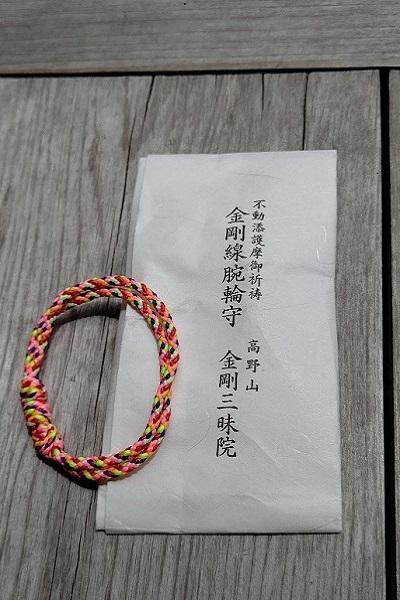
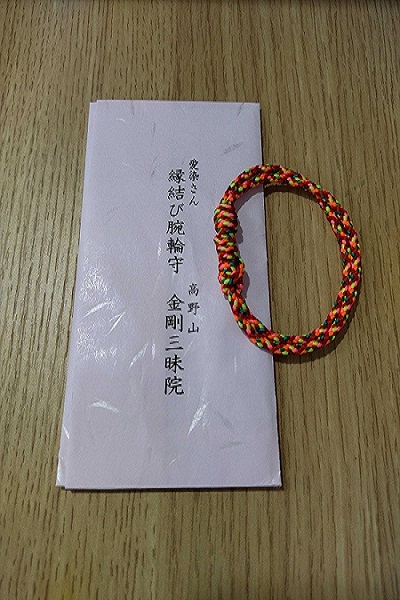
By the way, the Ragaraja of Kongosanmaiin has a *“Kongo Line” that extends to the hands of those who visit the temple from the outside, so that those who cannot enter the main hall can also benefit from the temple.(You can also see it in the video, around 4’50”) A bracelet of this Kongo Line is sold as a beneficial amulet.
*The Kongo Line: a boundary that removes misfortune and invites good fortune.In fact, it is said to be very beneficial, and some people visit the shrine every time they have a good encounter with someone, thanking them for their kindness, and replacing it with a new one each time.It’s also wrapped around Tsuyoshi’s wrist…can you guys find it?
Even before we purchased the amulet in the first place, we were guided by the fate of others to complete this work.It’s amazing how historic temples and sacred statues in Japan can make our wishes come true even before we have a good luck charm!
With the help of the temple staff, including the chief priest, as well as the general public who were staying at the lodgings, we were able to complete the filming without incident.We recorded the sutra reading from early in the morning and mixed it directly into the play, and enjoy the performance that matches the tranquil atmosphere of Koyasan!
Of course, we, the staff, also bought this bracelet. lol
TEXT : THAT IS GOOD editorial department, Nakamura